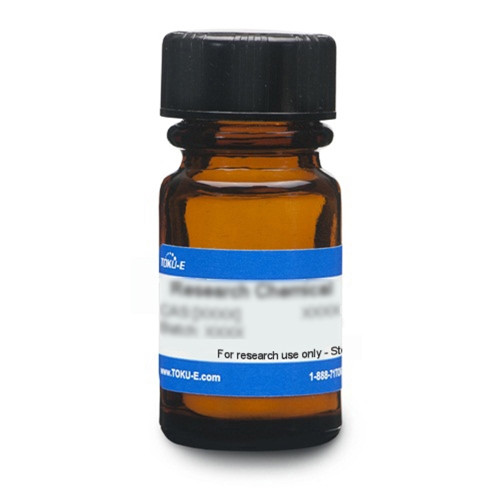Monensin Sodium, USP is a naturally occurring ionophore, used as a nonhormonal growth promoter and coccidiostat. It is a polyether antibiotic used against Gram-negative bacteria and has antiparasitic activity.
Monensin Sodium is soluble in chloroform, methanol, and other organic solvents and slightly soluble in water.
This product is considered a dangerous good. Quantities above 1 g may be subject to additional shipping fees. Please contact us for questions.
| Mechanism of Action | As an ionophore, Monensin can disrupt the natural ion gradients such as Ca2+, Mg2+, K+ and Na+, and affect transmembrane ion transport. |
| Eukaryotic Cell Culture Applications | Liver microsomes were used to study the P-450 isoenzymes involved in the biotransformation of the ionophore Monensin and how it may be affected by chemotherapeutic agents. Results suggest that P-450 3A can play an important role in the oxidative metabolism of Monensin (Nebbia et al, 1999). |
| Solubility | Soluble in chloroform, methanol, and other organic solvents. Slightly soluble in water. |
| References |
Aowicki D and Huczyński A (2013) Structure and antimicrobial properties of Monensin A and its derivatives: Summary of the achievements. Biomed Res Int. 2013:742149 PMID 23509771 Agtarap A, Chamberlin JW, Pinkerton M, Steinrauf L. (1967) The structure of Monensic acid, a new biologically active compound. J Am Chem Soc. 89(22):5737-5739 PMID 5622366 Butaye, P, Devriese LA and Haesebrouck F (2003) Antimicrobial growth promoters used in animal feed: Effects of less well known antibiotics on Gram-positive bacteria. Clin. Microbiol. Rev. 16(2): 175–188 Griffiths G, Quinn P, Warren G (1983) Dissection of the Golgi complex. I. Monensin inhibits the transport of viral membrane proteins from medial to trans Golgi cisternae in baby hamster kidney cells infected with Semliki Forest virus. J Cell Biol. 1983 Mar;96(3):835-50. PMID 6682112 Lowicki, D and Huczyński A (2013). Structure and antimicrobial properties of Monensin A and its derivatives: Summary of the achievements. BioMed Res. Intl. 1–14. doi:10.1155/2013/742149 |








